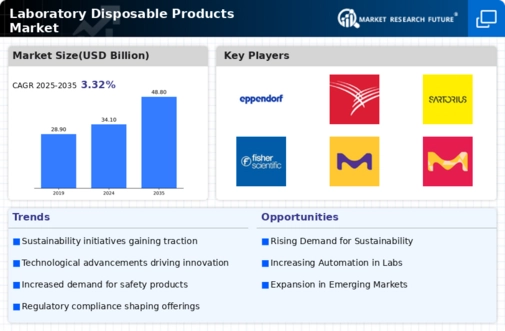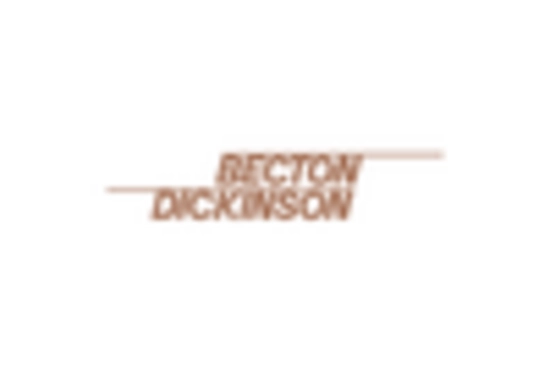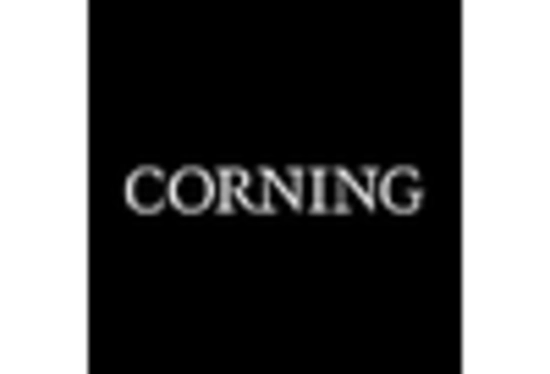The Laboratory Disposable Products Market is characterized by a dynamic competitive landscape, driven by innovation, regulatory compliance, and the increasing demand for high-quality laboratory supplies. Key players such as Thermo Fisher Scientific (US), Becton Dickinson and Company (US), and Merck KGaA (DE) are at the forefront, each adopting distinct strategies to enhance their market positioning. Thermo Fisher Scientific (US) emphasizes innovation through continuous product development, focusing on advanced materials and technologies to meet evolving laboratory needs. Meanwhile, Becton Dickinson and Company (US) has been actively pursuing strategic partnerships to expand its product offerings and enhance its distribution capabilities, thereby strengthening its market presence. Merck KGaA (DE) is concentrating on sustainability initiatives, aiming to reduce its environmental footprint while maintaining product quality, which resonates well with the growing demand for eco-friendly laboratory solutions.
The business tactics employed by these companies reflect a concerted effort to optimize supply chains and localize manufacturing processes. The market appears moderately fragmented, with a mix of established players and emerging companies vying for market share. This competitive structure allows for a diverse range of products and innovations, fostering an environment where companies must continuously adapt to maintain their competitive edge. The collective influence of these key players shapes the market dynamics, as they leverage their strengths to address customer needs and regulatory challenges.
In August 2025, Thermo Fisher Scientific (US) announced the launch of a new line of biodegradable laboratory consumables, marking a significant step towards sustainability in laboratory practices. This initiative not only aligns with global environmental goals but also positions the company as a leader in eco-conscious product development, potentially attracting a broader customer base that prioritizes sustainability.
In September 2025, Becton Dickinson and Company (US) entered into a strategic alliance with a leading biotechnology firm to co-develop next-generation diagnostic tools. This collaboration is expected to enhance Becton Dickinson's product portfolio and accelerate the introduction of innovative solutions to the market, thereby reinforcing its competitive stance in the rapidly evolving diagnostics sector.
In July 2025, Merck KGaA (DE) expanded its manufacturing capabilities in Asia by investing in a new facility dedicated to the production of laboratory disposables. This expansion not only enhances the company's supply chain efficiency but also positions it to better serve the growing demand in the Asia-Pacific region, which is witnessing significant growth in laboratory activities.
As of October 2025, the competitive trends in the Laboratory Disposable Products Market are increasingly defined by digitalization, sustainability, and the integration of artificial intelligence. Companies are forming strategic alliances to leverage technological advancements and enhance their product offerings. The shift from price-based competition to a focus on innovation, technology, and supply chain reliability is evident, suggesting that future competitive differentiation will hinge on the ability to deliver high-quality, sustainable, and technologically advanced products.


















Leave a Comment